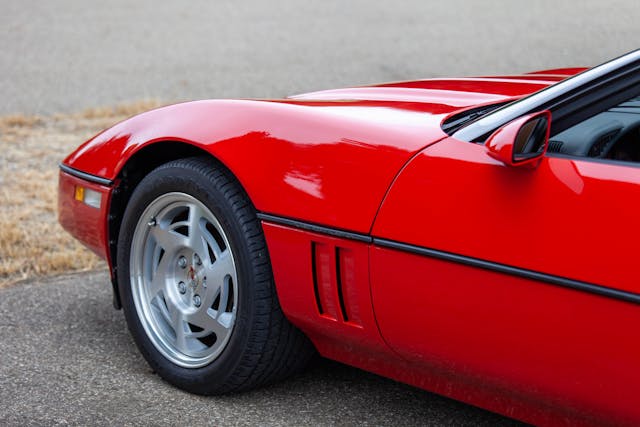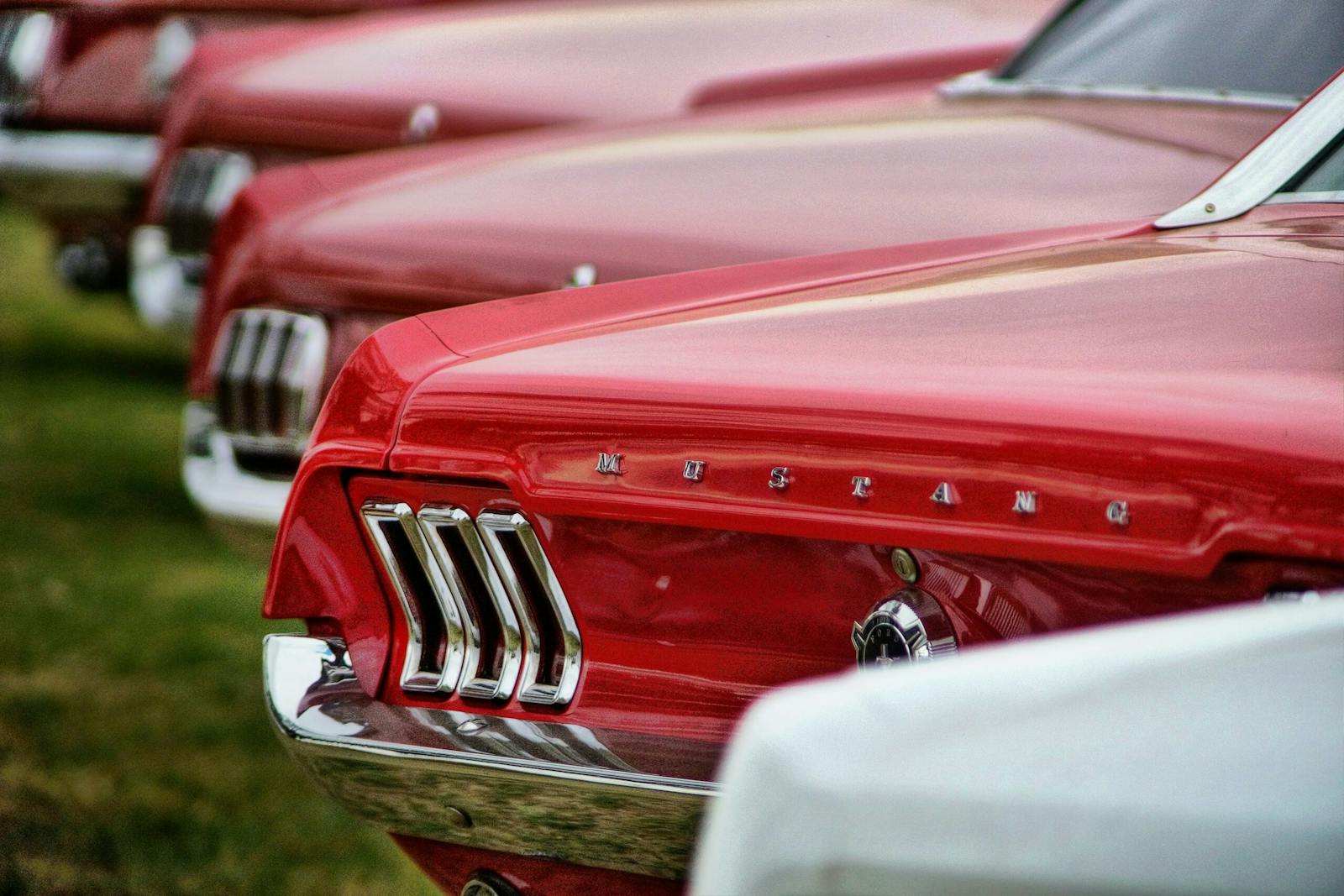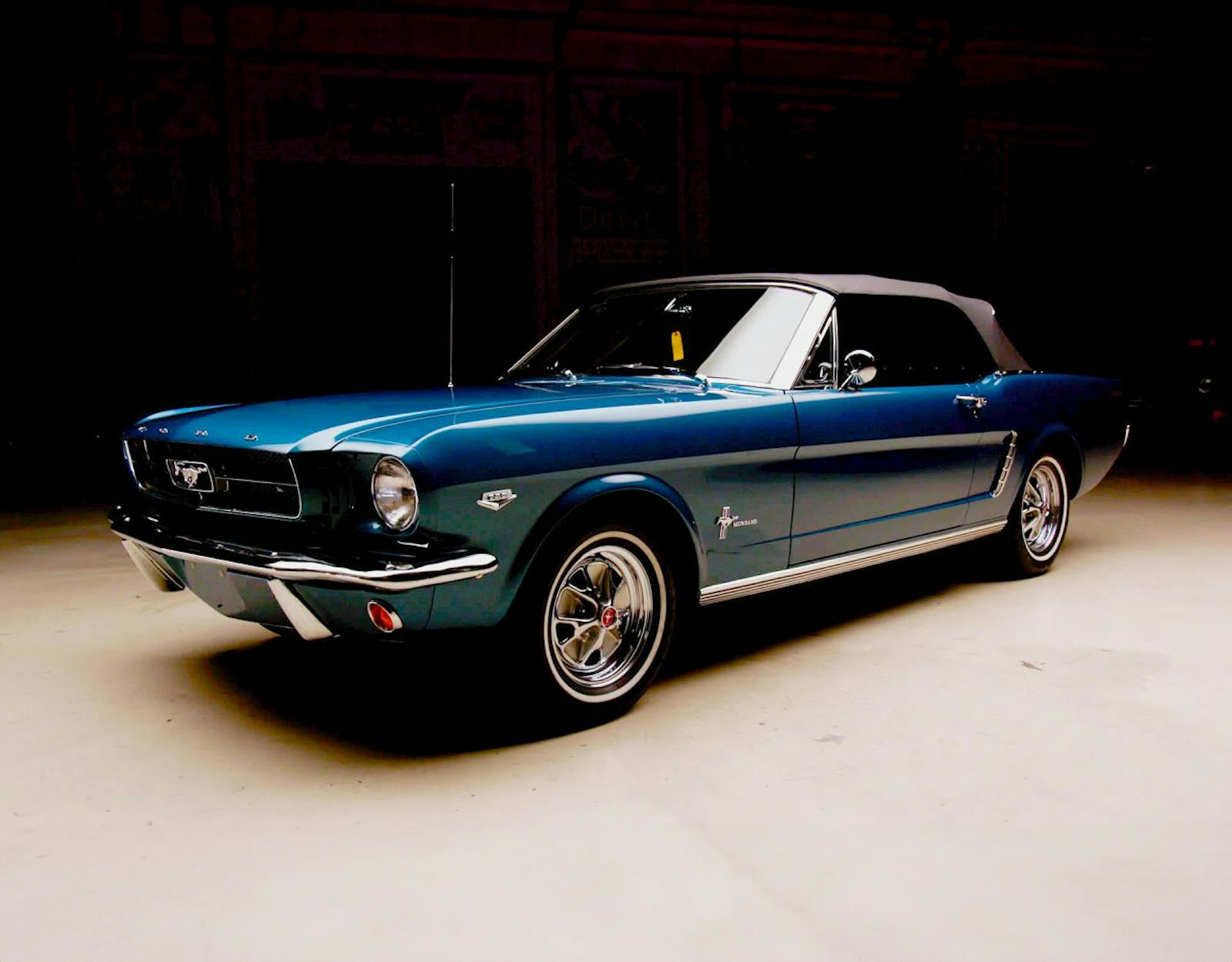Why the C4 Corvette deserves your attention
Fresh off driving the new Z06, I’ve been reminiscing about how Corvettes, particularly the C4 (the fourth generation built from 1984-96), were among the first cars to shape my budding automotive enthusiasm. My dad’s ’89 convertible formed the center of my elementary school car universe—little did we know that our spirited Saturday back road drives in Northern Virginia would lead to my amateur racing hobby and a career writing about cars.
Decades later, the C4 Corvette still represents an engaging sports car entry point. They’re affordable, too, with plenty of variations from which to choose.

“Younger enthusiasts can easily afford a nice, fourth-gen Corvette—they’re fun to drive and have good performance even by today’s standards,” said Harlan Charles, product marketing manager for the Corvette and Camaro, over breakfast ahead of the new Z06 drive. Charles owns a 1990 Corvette (six-speed, Z51) in white with a slate blue interior, and it’s been around the block a time or two. Since new, he’s driven it through 49 states and most of Canada’s provinces.
Why do C4 Corvettes remain so reasonably priced? A big part is because Chevy made so many—358,180 over the 12-model-year run—but that doesn’t tell the whole story.
“When you build a boatload of cars, most of which have been cared for better than your average commuter over the years, you have a supply that generally meets the demand,” said Greg Ingold, editor of the Hagerty Price Guide. “There are enough of them in good shape that if you’re in the market, and you don’t like the first couple you look at, there’s probably another six to choose from that meet your criteria at a similar price point.”
That wealth of quality cars to choose from has created what seems like a permanent buyer’s market for the C4. Even with recent valuation increases, solid drivers with low-ish miles and no major needs can be had for well under $20,000. Of course, newer and more desirable models will fetch more than the median prices. For example, as of our most recent price guide update, the 1995 ZR-1 (the last year of the famous “King of the Hill”) is valued at $27,600 in #3 (Good) condition, well above the median #3 value of just $9600 for base C4s. Nonetheless, with values of other marques from the same era seemingly going off the deep end, a driver-quality, 405-hp ’90s classic for under $30,000 presents a solid deal.
Having spent a day and a half with a 1990 ZR-1 recently, I can attest that Charles is right—C4s represent incredible sporting bang for your buck. The chassis is nimble, the controls well-weighted, and the LT5 engine eager to wind out to 6500 rpm. That said, the base L98 and LT1 engines in the base cars don’t disappoint, either. What they lack in rpm compared to the ZR-1 mill, they make up for in low-end torque and ease of maintenance. The ’84–89 and ’90–96 interiors each offer distinct period GM futurism, which has its own unique appeal.

What should you look for if the C4’s slick looks have caught your eye? While not an exhaustive list, here are a few things to think about: Early cars had a reputation for riding a little rough, though they received incremental improvements over the years. And though that period GM futurism gives them a unique look, C4 interiors also came with period GM squeaks and rattles.
Selective Ride Control debuted in 1989 as an option on the base car, and was standard on all ZR-1s from 1990–95. These three-way adjustable Bilstein dampers offered a tangible difference in ride quality, allowing you to toggle between a softer touring setting or two degrees of added firmness when you needed it. If you wanted full-time performance handling, you ticked the box for the Z51 package. Although only available on the coupe and varying in its contents by year, Z51 typically provided stiffer shocks, springs, and sway bars along with additional cooling capability, performance tires, and steering tweaks. The ZF six-speed transmission, also introduced in 1989, improved the shifting experience markedly from the prior Doug Nash 4+3 unit. The LT1 engine fired up in 1992, cracking the 300-horsepower barrier in a base Vette for the first time in 20 years. Convertibles also reemerged after a ten-year hiatus in 1986. Looking for something a little hotter? Chevy’s in-house ZR-1 (1990–1995) and Callaway’s twin-turbo Corvettes exemplify the era’s American entry into the supercar space.
Expect to pay a premium for certain options: The Z51 package is typically worth an additional $500, as is a glass targa roof on coupes. Hard tops for convertibles fetch an additional $1,000, and special editions, like the 1993 40th Anniversary cars or the 1996 Collector Edition are valued at an additional $3000 ($7500 for Anniversary ZR-1s). Automatic cars typically command 8–10 percent less than a similar manual-equipped Vette.
Despite its relative affordability and being a product of the ’80s, interest in fourth-gen Vettes still skews surprisingly older. Looking at quotes across the last three years, 27 percent come from Gen X (who are 32 percent of the market as a whole), 12% comes from Millennials (who are 21 percent of the market), 7 percent comes from Gen Z (who are 7 percent of the market), and 46 percent comes from Boomers (who are 35 percent of the market). Time will tell if the popularity of all things ’80s and ’90s will begin to draw younger interest to the C4, but we’ve been wondering that for a while now. Till then, there are plenty out there for the taking.
What would I choose? I'd look for a red '89 just like my dad's, but mine would be a coupe with the six-speed and Selective Ride Control. The L98's 245 hp is plenty, and I like the look of the pre-1991 facelift cars. Whatever model or trim strikes your fancy, the C4 Corvette will give you of-its-era character in a platform that's still fun today.
Check out the Hagerty Media homepage so you don’t miss a single story, or better yet, bookmark it.



I want some of whatever you are smoking!
Personally, my favorite (non sharkbody) edition. Love the clamshell hood….. squared lines… OK(ish) horsepower. But the electronics quite frankly scare the heck out of me. I’ve heard too many times that some part went out and no way to fix… only replace the whole thing. Have an 84 Storage Princess…. my nephew’s car and I can’t part with her since he was killed….. keep her stored properly and waiting for a reason to get back to driving her. We worked on her all the time and she was nearly perfect. Luckily, no dash gauge issues. I picked up an 05 C6 low miles and decent shape. Shelled out for new Mag Ride, clutch and other little stuff and it’s nearly bulletproof. Build quality? Pure GM… crappy plastic that wears out, breaks or crumbles. But a Maroon on Red C4 was always on my want list. I seriously have no idea how any of these things are on the road.
In the midwest you are lucky to get $10k for a low mileage, babied C4 with 30,000 miles. It happened last week at a classic car auction of hundreds of cars. Much less for anything with more miles. Auctions usually bring more money but they are also more expensive for both the buyer and the seller.
What about the 96 Grandsports? Not even a mention???
I have a 96 GS convertible- best fun driving vehicle we have had for years. 250k (Km in Canada). Lt4 dark green with Tan leather & top ….love it!
I have a beautiful C4 Greenwood 1993 metallic blue aqua In mint condition!! Black leather interior…
Poor build quality
Cramped interior
Hard to get in and out of
Horrible ride
That might be acceptable if they were fast but they are saddled with a weak V8
The early cars were slow, but did improve a lot with the L98 and then became legitimately fast with the 300hp LT-1 in 1992, which probably represents the best value. I would wager that the build quality is actually pretty good, at least on the 1990 and later models. The interior was massively improved for 1990. The LT-5 in the ZR-1 is still a masterpiece today, and it’s proved reliable by most accounts. My biggest complaint: C4 is NOT nimble. The chassis is very weak in torsion (half the stiffness of a gen1 open-top Viper), which produces very unpredictable handling especially when combined with wide tires that produce a lot of grip. Take off the targa top and it gets even worse. However, driven with a little restraint the cars are very enjoyable and actually quite comfortable (once you’re in) for all-day excursions. PS – I think the author didn’t mention the ’96 Grand Sport due to it’s rarity and high price.
I had a 85 Greenwood C4 I bought with a blown 383 stroker in it that we found was not worth rebuilding when we tore it down. We went with a 1970 350 4bolt truck block, had some heads refurbished , and topped it with a Edelbrok Performer intake and 650 Edelbrok carb. The electrics were a nightmare and every time we drove it, something broke. I grew tired of constantly trying to figure out what happened this time and spending the $, so sold it it, bought a clean , low mileage 89 convert. Then covid hit, my wife lost her job, my hours were reduced so the toy had to go. My back and hips don’t miss the C4, it was fun while it lasted tho .
I’m partial to the after face-lift cars. The back ends look much better than the karate chopped ones. Always a manual. ZR-1 preferred.
We bought our ‘86 C-4 “Indy pace car” new and still own it. It’s a convertible and has the 4+3 manual transmission which I love. The magazines never “got” the transmission and griped so much that Chevy dropped it. Too bad. It’s been trouble free for all 54,000 miles. Just went on a 150 mile rally through twisty Wisconsin back roads and using the +3 overdrive made it behave like it had another hundred horsepower as it stretched out every gear. Floor it in any gear and it instantly auto-shifts out of overdrive and hauls butt.
It handles and rides very well, the convertible top is original and easy to put up and down. Having it so long I take the stying for granted but have had Gen -Xers fawn over it saying it was their teen dream car. The C-4s are worth having.
The ZR1 is my go to for the C4. It just has such a great looking engine.
I have a 96 LT4 6 speed convertible. Cowl shake is quite bad on even mildly rough road surfacses. That is until I installed the factory hard top, the car was transformed. It’s now quite stiff and free of any discernable flex. It’s said the convert with hard top is measurably stiffer than the coupe, I would agree. I would put it up against my Porsche Cayman S in handling and the LT4 easily out powers it. Pretty good for a car 10 years it’s senior.
Have a 91 ZR-1.Best bang for your buck.Bone stock and just keeps taking a beating!Thes cars are extremely durable.Consistent Low 13 second quarter mile times.They are different to get in and out of. But if you’re having that much of a hard time it’s time to go to the gym or lose some weight.
Through all the issues I myself cannot figure out why I love my 96 LT4 more then any car I have owned. Well maybe I did figure it out, With 80k miles the ZF still shifts like butter and the LT4 being 27 years old it’s easy to tap into the fun factor, and the gas mileage capable of 30 mpg cruising the highway WOW. To sink down in that seat and look out that windshield puts a smile on my face every time. As far as build quaulity goes, lot better then my 2000 Mustang GT.